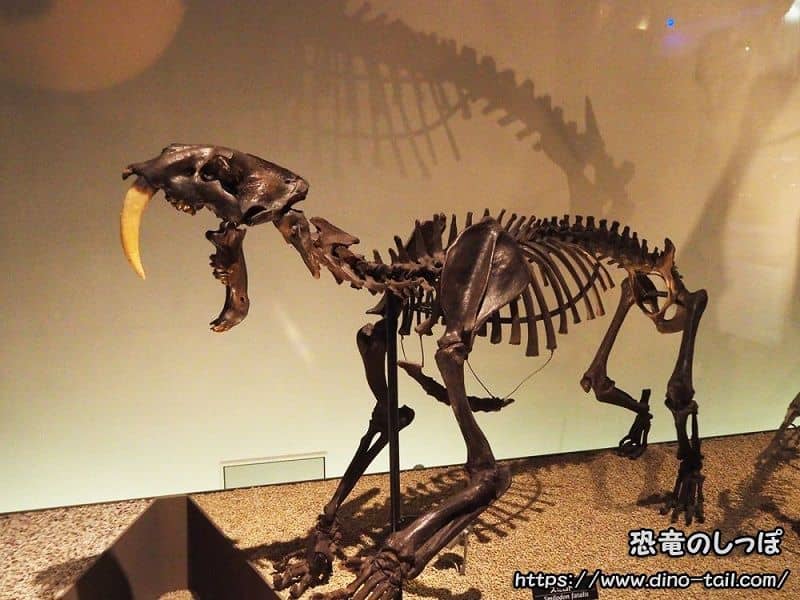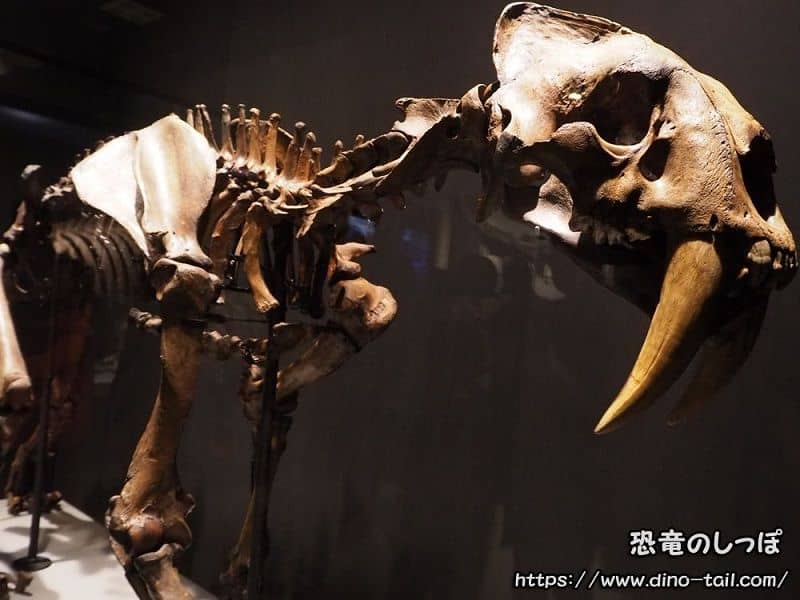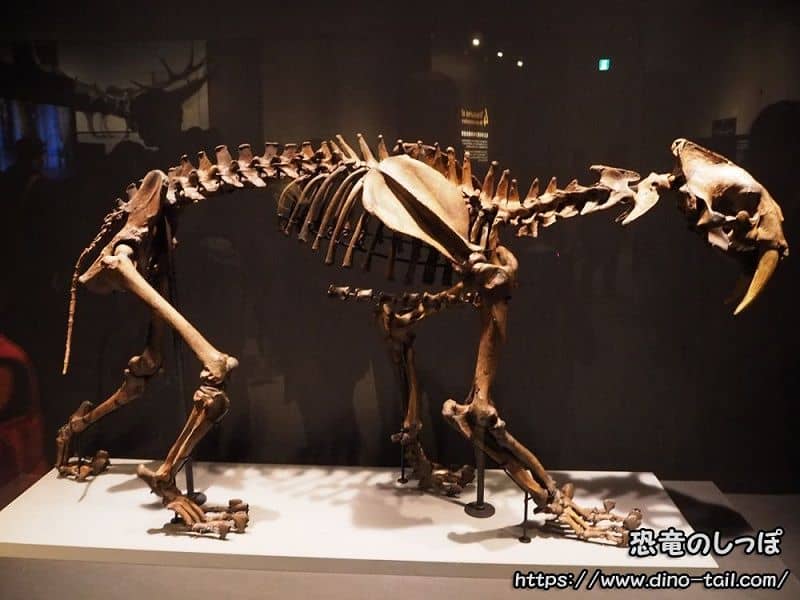About Smilodon (Saber-toothed Cat)
| Scientific Name (Genus) | Smilodon |
| Meaning of Name |
Knife-like tooth
smilē (chisel) [Greek] - odous (tooth) [Greek] |
| Classification | Felidae, Machairodontinae |
| Total Length | Approx. 2m |
| Diet | Carnivorous |
| Period | Early Pleistocene - End of Pleistocene, Cenozoic Era (approx. 2.5 million - 10,000 years ago) |
| Sub-classification / Species Name |
Smilodon fatalis
Smilodon californicus Smilodon gracilis Smilodon populator |
| Year of Paper Publication | 1842 |
Features: The Power Fighter of the Ice Age
Smilodon was the most famous saber-toothed cat that reigned over the Americas during the Ice Age of the Cenozoic Era. However, despite its name, it is not a direct ancestor of modern tigers or lions. It belongs to the "Machairodontinae" subfamily, a group of felines that independently evolved saber-like canine teeth and then went extinct.
Hunting by Overpowering
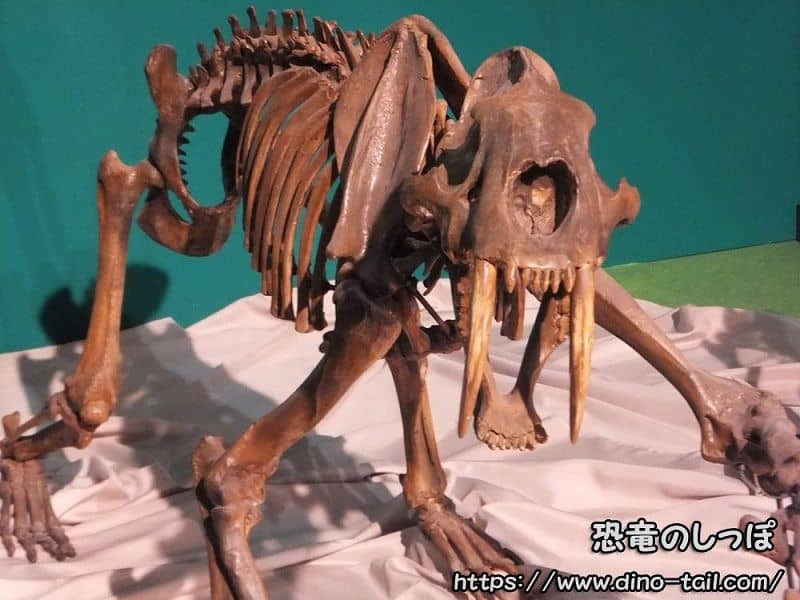
Smilodon's skeleton was stockier than a lion's, and its forelimbs were surprisingly muscular. This indicates that they were not agile pursuers but ambush power fighters. They probably ambushed large prey like bison from the bushes, pinned them to the ground with their powerful forelimbs, and then accurately stabbed their long but fragile saber fangs into a vital spot like the throat to kill them with a single blow.
Social Behavior and Care for Others
At the La Brea Tar Pits, many Smilodon fossils have been found with evidence of serious injuries, such as broken bones and arthritis, that they survived for a long time afterward. It is believed that other members of the pride helped their injured companions by sharing food, which is evidence that they had a complex social structure like lions.
A Natural Trap: The La Brea Tar Pits
There is a special reason why so many Smilodon fossils have been found. Many of them have been discovered at the "La Brea Tar Pits," which still exist in the heart of Los Angeles, USA.
This is a place where natural asphalt (tar) seeps from the ground, and since the Ice Age, it has been a "natural trap" where animals that mistake it for a watering hole get stuck. Drawn by the cries for help of large herbivores like mammoths and bison that were trapped, Smilodon, who tried to prey on them, also fell into the tar trap one after another.
This tragic chain of the food chain has made the La Brea Tar Pits a world-class fossil treasure trove that has preserved the Ice Age ecosystem in its entirety. It is thanks to this place that we know so much about Smilodon's social behavior and injuries.
The Diet of the Saber-Toothed Cat - Smilodon
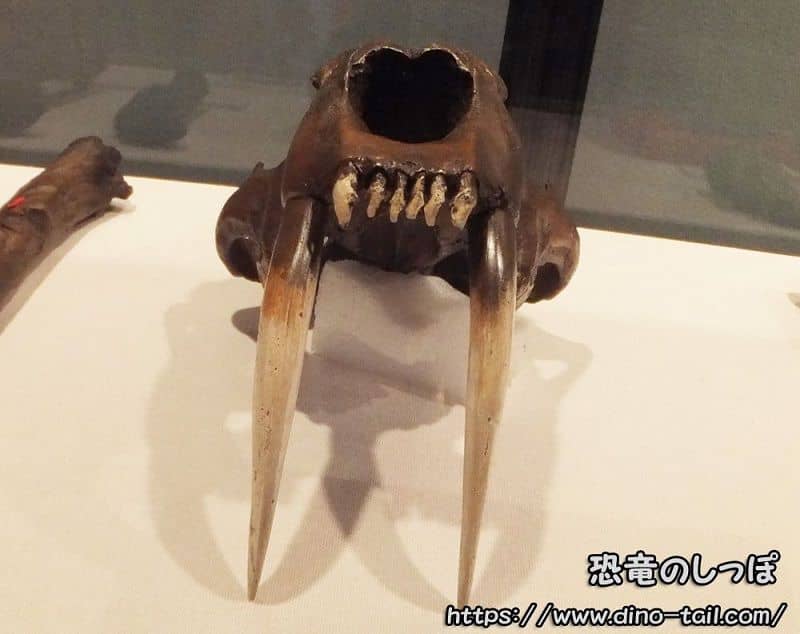
Smilodon could not run as fast as some modern felines. Its forelimbs were well-developed for holding down prey.
Its jaw could open about 120 degrees, but it was not strong enough to crush the bones of its prey. To avoid breaking its canine teeth on hard bones, it seems to have targeted soft areas like the throat to stab.
There is a theory that it was a scavenger because it could not bring its upper and lower jaws together, but the prevailing theory is that it preyed on slow-moving herbivores.
With the End of the Ice Age
About 10,000 years ago, as the Earth warmed and the Ice Age ended, Smilodon disappeared. The main cause of its extinction is thought to be its "hunting style."
Due to climate change, its main prey, large herbivores such as mammoths, mastodons, and ancient bison, became extinct or their numbers dwindled one after another. Smilodon, which had evolved to specialize in hunting large, slow-moving prey, could not adapt to this rapid environmental change and shared the fate of its prey.
Smilodon Stamp and Fossil Gallery
